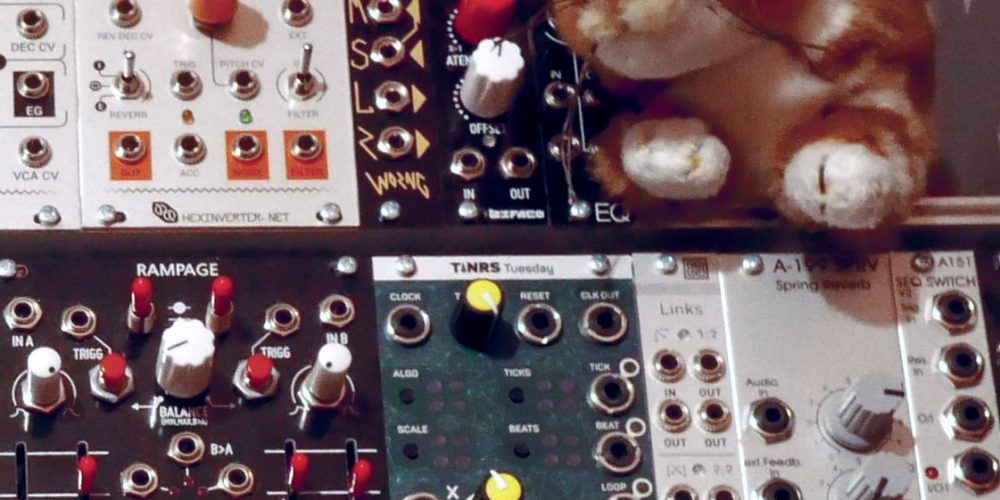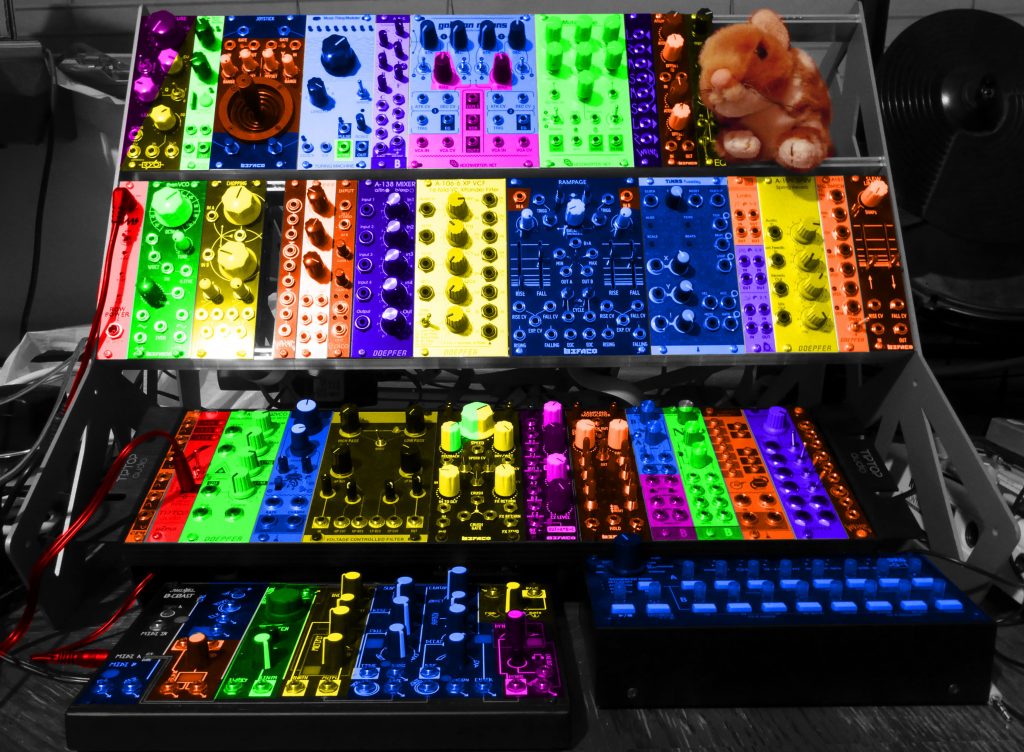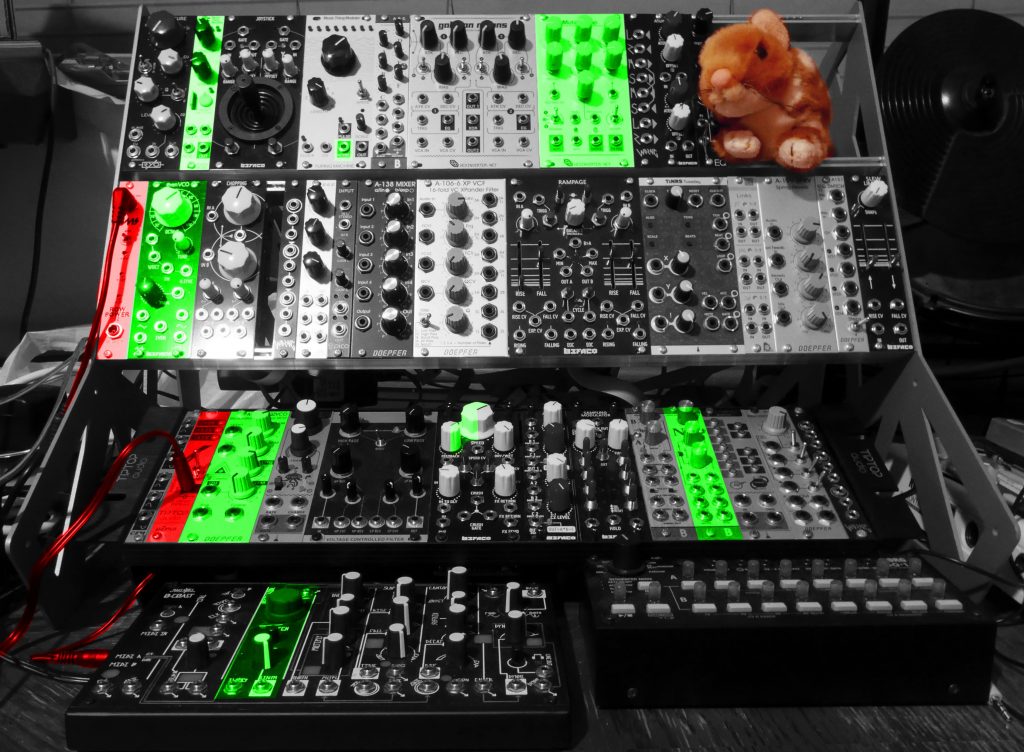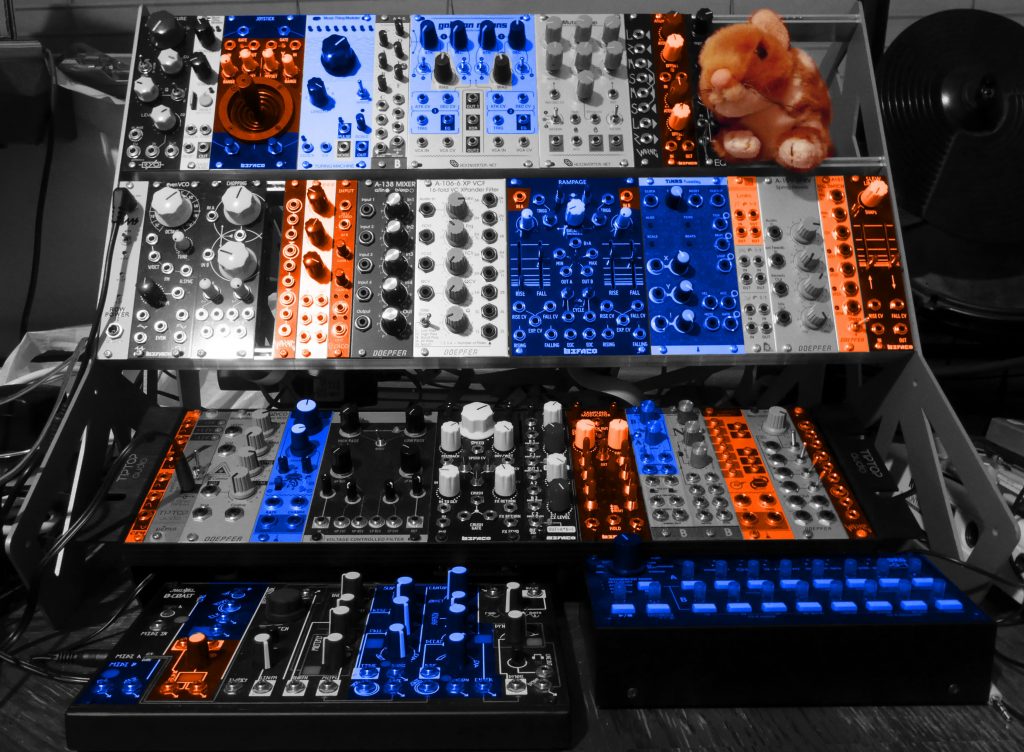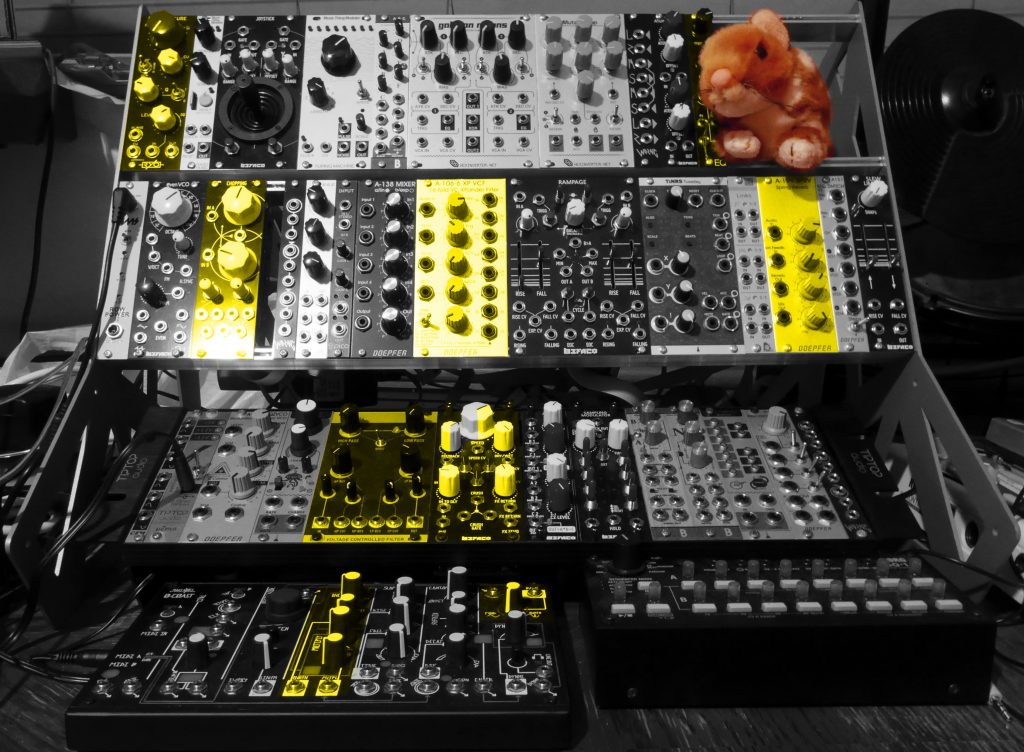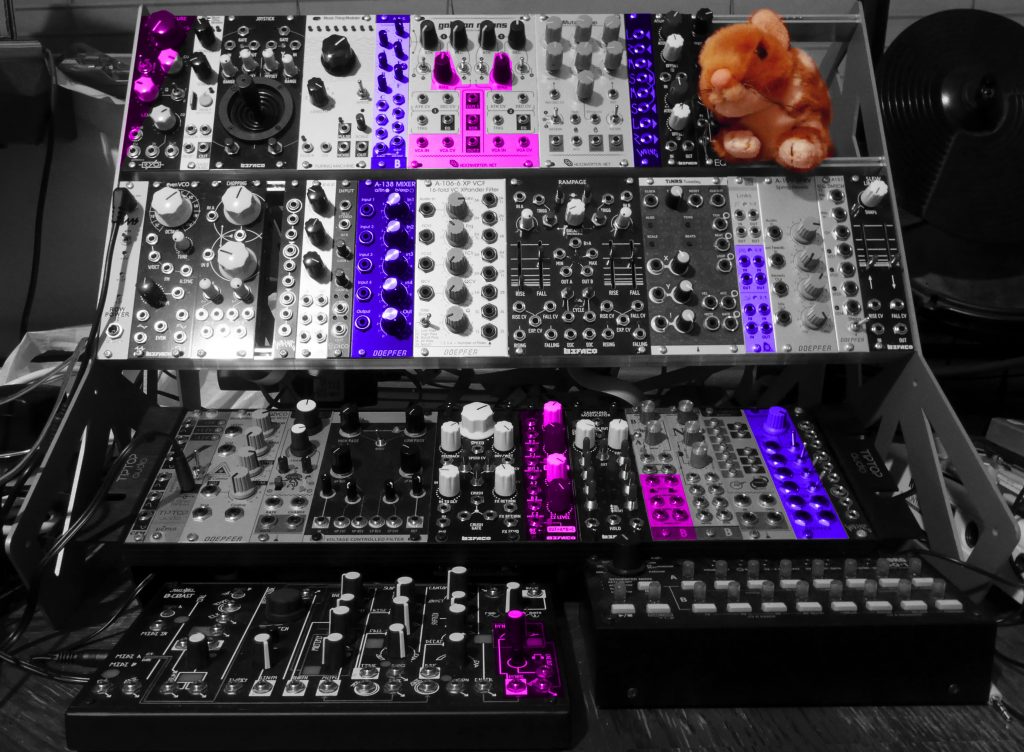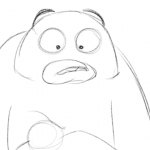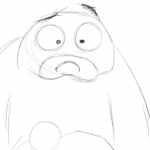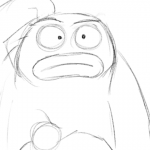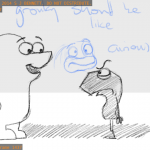In these rough storyboards, Pointy has just asked Gronky a pretty curly question – and with that, here’s my activity report for the week 3 to 9 November. It’s on the long side but only because I’ve been busy. 🙂
In summary: the rewrite is going well, I’m working on a C64 version of the music for the end credits (mockup here), and I am still a nerd for the C64’s sound chip some 29 years later.
Prior to last week at the end of October I’d started the process of rewriting – that ramped up bigtime this week to the point where I was safe to start storyboarding on Thursday evening. As of now, 7:30pm on Sunday, I’ve fully boarded 3 of the 5 sequences as currently planned (intro, payoff and outro) and mostly boarded another (lead-up to the gag-fest).
There’s one sequence that remains completely unboarded – that would be the gag-fest, which is what everything builds up to. Right now it’s still stuffed with first-draft ideas. The ideas are mostly funny but I’m quietly prepared to dump any of them if I think of funnier stuff or something doesn’t work in context. I’m aiming for a steady escalation of looniness.
Also I have something like a satisfying ending now. It’s weird to admit this but I didn’t have anything like an ending before. The story just sort of ended – too early, as it turns out. Following Gronky and Pointy for just a couple of extra beats has made a huge difference.
By far the biggest change in the boards from the last version – not immediately obvious from this post’s example images – is that I’m fearlessly using super-advanced highly secret film making techniques like close-ups, moving camera, tracking shots and more. Up until this rewrite, I’d been framing mostly like a newspaper comic strip is framed with “square” wide-shots to show everything that’s going on at once. It took me that long to figure out what a complete waste of the medium that would be.
Using camera angles properly also opens up opportunities for humour – Pointy makes a subjective assertion supported by a tight camera angle, the next shot is a wide camera angle which makes it clear that the objective truth doesn’t match up with Pointy’s assertion at all. And hence a more engaging film.
Speaking of characters, I was putting Gronky in front of the camera and not having him do anything for an eternity while the music played. The music had to maintain interest pretty much by itself. I mean, I like these characters and they’re fun for me to look at even standing around, but they’re more fun to watch as they’re expressing their character appeal more actively – and working towards that, suddenly the structure of the film and the characters are gelling much better.
For example: Gronky used to start the short entranced by a firefly. Now we join him as he’s having a stroll. Pointy used to accost Gronky from off-screen as he was standing around, but now (after failing to attract Gronky’s attention) Pointy steps out in front of him to stop him. Between them, they’re creating situations through expressing their character instead of being placed there more artificially. Much better.
And I wrote the stupid firefly out. One less unnecessary asset to make and animate. Woohoo!
Even the plot beats have grown little notes on where the characters are at mentally – this is something I can use as notes when it comes time to get the characters moving. Just like a real film director. 🙂
Yet it’s not all plain sailing. (It never is.) I had a small hiccup today with the more organisational planning side of things. For some reason in all the books I bought and in all the websites I googled there wasn’t a succinct and well-explained guide on how best to go from a script to a master list of shots that could be used for organising storyboards. That part of the workflow, vitally important as it is for keeping things organised, doesn’t get much attention. The live-action techniques weren’t much help because live action movies are usually shot out of sequence, and for some reason the animated stuff tended to go down as far as scenes but not individual shots.
The workflow I’ve arrived at myself to deal with this problem is full of clunk and not very nice, so I’ll keep it to myself for now. Suffice it to say I have sequences, “setups” and “shots”. Multiple “shots” may share a “setup”. The images attached are the entirety of shot 9 from sequence 2 – images 9a, 9b and 9c from setup 9. That’s neat enough. The system breaks when it comes to inserting shots within stuff that’s already been boarded. “Setups” can’t be relied on for ordering because they get reused, but if I want to insert something between “shot” 9 and 10 and still have it alphabetise nicely.. or between 9a and 9b.. without renaming any files…
Anyway. I couldn’t find any information even in my collection of highly reputable books about a robust scheme for organising story beats, sequences, scenes and shots which lets a director add, alter and axe stuff without making a bloody horrible mess of the numbering scheme. I seem to remember that Titus Fehr solved the problem the way we solved that problem back in the days of C64 BASIC – leave enough room between the points of designation to allow for insertion (i.e. put your program on lines 10, 20, 30 etc so that if you need to insert something else between 10 and 20 you can put it on line 15).
Quite possibly I’m trying to do the shot planning with too much precision too early in the process as well. I’m new at this but by taking it seriously and pushing ahead with it I’m learning useful things about how to direct and produce solo. It’ll all be helpful for next time.
But wait, there’s more!
I was going to keep this a secret but since I have a better production secret to keep now I’ll come out and say it: in keeping with the “everything is unashamedly electronic” aesthetic of this project, I shall now reveal that the closing credits will be a wee tribute to the sights and sounds of the good old Commodore 64. There will be colourful paleo-digital graphics for the eyes and a rocking SID tune for the ears output from an actual 6581 SID chip courtesy of HardSID and Covert BitOps’ spiffy (and open source!) music editor GoatTracker.
I’ve already started planning out the closing music using u-he’s Zebra softsynth to imitate the instruments I’ll need before I plunge into the fun and games of GoatTracker’s wavetable-based instrument system. Based on what I’ve got so far, I’m pretty sure I can fit the tune into the traditional 3 channels using some tried and tested SID tricks but if need be I can also spread it across up to six channels.
It’s tricky to test everything I want though because many of the characteristic techniques of writing music for SID – wave sequencing, adjacent-channel hard sync and ringmod – are either impossible or plain impractical to accomplish even using state of the art softsynths like Zebra.
The SID chip, unlike all of its early 1980s contemporaries, was a hybrid analogue-digital synthesiser whose native environment was inside of a budget home computer hooked up to a programmable microcontroller with 38k of available RAM. No other synthesiser at the time let you boot into a programming environment to drive it and no other home computer of that generation had a sound chip as advanced and thoughtfully designed. What ultimately makes “sidtunes” sound the way they do is the super-fine level of control wielded by the Commodore 64’s talented musicians – control so fine that they were able to exploit a manufacturing flaw around changing volume to do sample playback.
Fortunately the control required to do a bona fide SID tune is something that trackers excel at – they aren’t as visually friendly as piano roll but when you need to work with precise numeric values instead of visual envelopes, trackers leave piano roll-based editors in the dust for sheer creative speed. I’m using GoatTracker for the final version instead of the HardSID controller running inside Reaper because it means I can control the SID from a single bespoke environment, something I’ll need if I want to use the chip to its fullest extent for making wicked cool sounds like this.
If you want to hear the mock-up, it’s up on Soundcloud.
That’s it for this week. By next Sunday evening I hope to have finished up the storyboarding and story planning.
